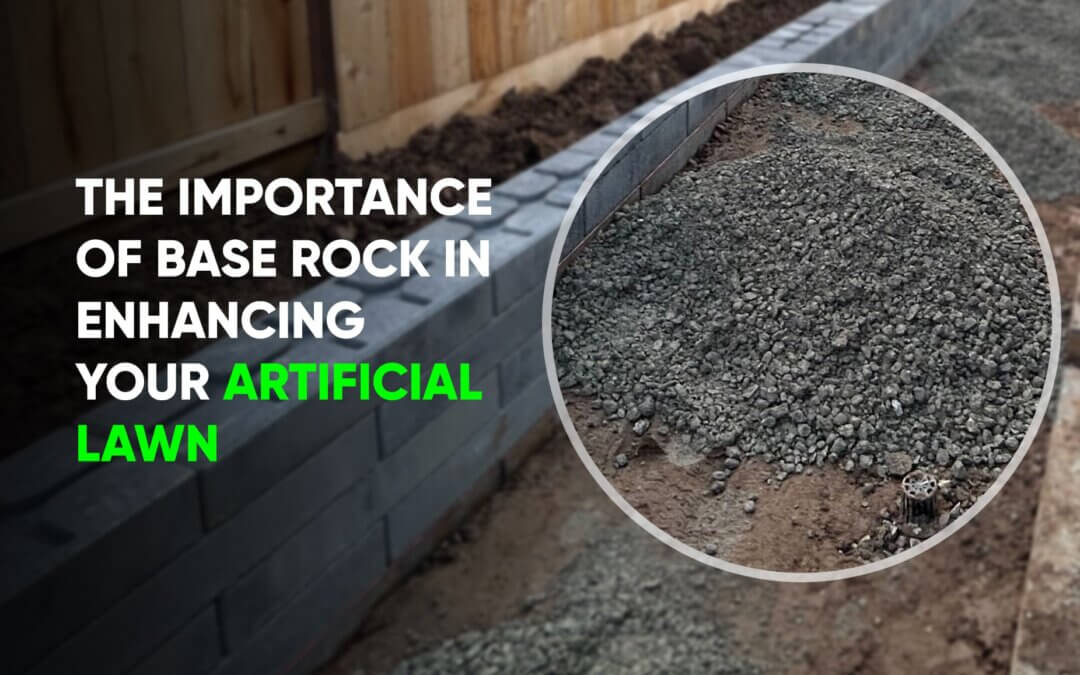Artificial grass for residential yards offers a low-maintenance, year-round green solution for many homeowners. But before you envision yourself lounging on a worry-free lawn, remember: a strong foundation is key. And that foundation starts with the base rock layer.
What is Base Rock for Artificial Grass?
Base rock, also known as sub-base, is a layer of crushed rock typically ranging from 2-4 inches thick. It’s used as the foundation for artificial grass installations.
It’s essentially grittier than gravel due to its angular pieces, allowing them to lock together tightly for better drainage and stability. Common types include crushed gravel and decomposed granite.
What Does Base Rock Do for Artificial Grass?
This “invisible” layer is one of the most important parts of artificial grass for residential homes and businesses. The benefits of base rock for artificial turf include:
Drainage Support
Imagine a heavy downpour. Without a base layer, water gets trapped under the artificial grass, leading to puddles, mud, and potential breeding grounds for mosquitoes. The crushed rock allows water to seep through, preventing these problems and keeping your “lawn” refreshing.
Foundational Stability
Ever stepped on uneven ground and felt your ankle wobble? The same applies to artificial grass. A well-compacted base rock layer creates a stable, level surface, thereby preventing dips, bumps, and potential tripping hazards. This is especially important for high-traffic areas like play zones, notably where safety is a concern.
Weed Management
Weeds are persistent and they don’t respect artificial boundaries. Without a base layer, pesky weeds can sprout through the grass, ruining the pristine look and potentially damaging the turf. The rock layer acts as a physical barrier, making it much harder for weeds to take root and invade your synthetic oasis.
Longevity Protector
A solid foundation equals a longer lifespan. The base rock layer helps distribute weight evenly, preventing the artificial grass from wearing down prematurely. This translates to years of enjoyment without worrying about replacing your investment.
Pest Deterrent
Uninvited guests like moles and gophers can wreak havoc on your synthetic turf. The base rock layer, especially when combined with edging, creates a formidable barrier, making it difficult for these critters to burrow and damage your lawn.
Instances Where You May Exclude Base Rock
There are some scenarios where it may be reasonable to install artificial grass without base rock:
- Over Existing Hardscapes – If placing synthetic turf over solid concrete, asphalt, or pavers that offer inherent stability and drainage capacity.
- Temporary Installations – For short-term temporary grass needed for special events, trade shows, etc. where long-term functionality is not required.
- Small Patios or Balconies – In confined spaces less than 150 sq. ft. that won’t bear significant foot traffic, furniture, pets, etc. the base may be excluded.
However, it bears emphasis again that skipping the base layer is rarely recommended. Moreover, in typical residential or commercial installations where you want the artificial grass to deliver on low-maintenance, functional performance for years to come, it is crucial to include it. It considerably raises the risk of problems occurring down the road.
Get In Touch for a Free Consultation
To learn more about base preparation for artificial turf or get a site-specific recommendation, contact Tampa Artificial Grass Pros today for a free quote consultation. Call 408-317-0931 or message us to get in touch with our team of experts. We look forward to helping you successfully experience the rewards of artificial grass done right!

